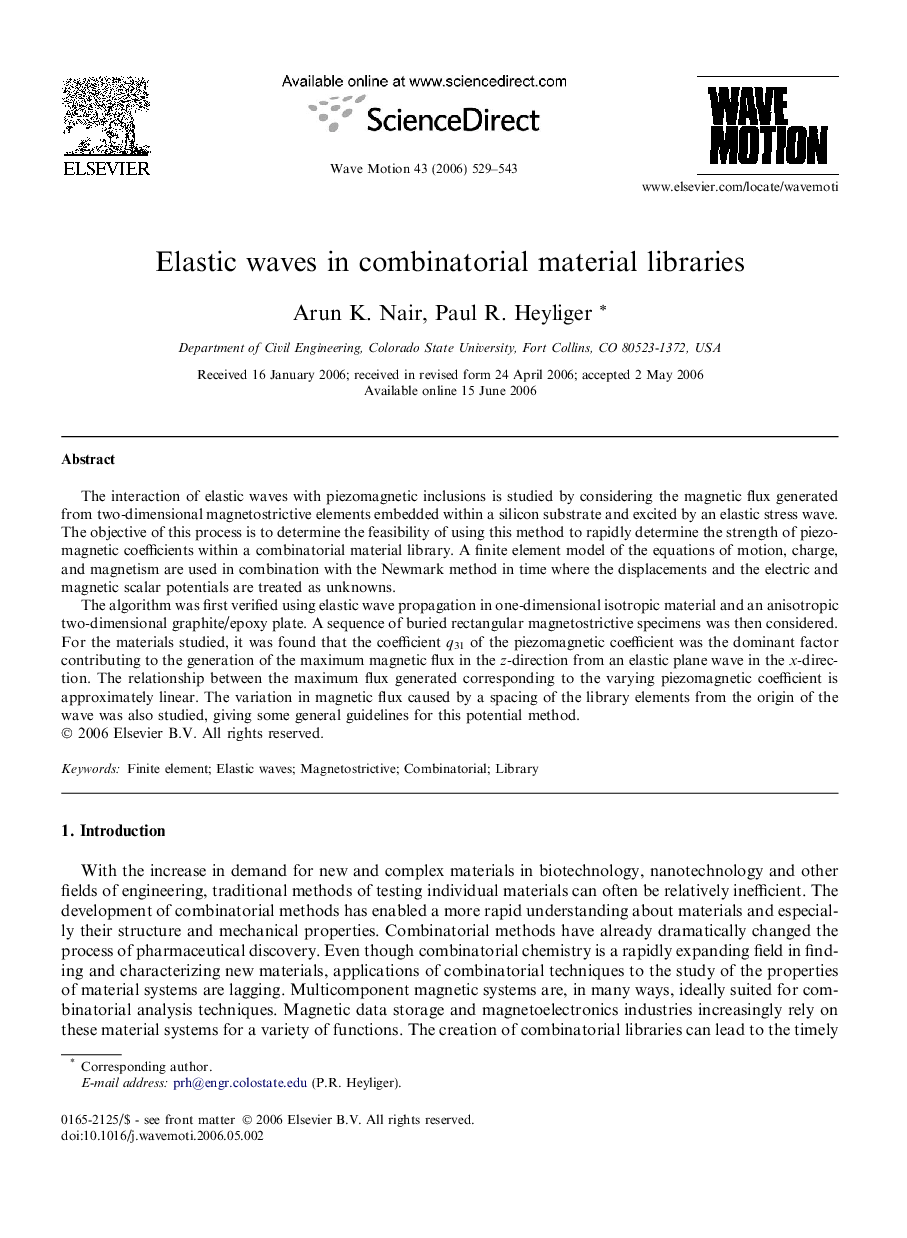| Article ID | Journal | Published Year | Pages | File Type |
|---|---|---|---|---|
| 1900802 | Wave Motion | 2006 | 15 Pages |
The interaction of elastic waves with piezomagnetic inclusions is studied by considering the magnetic flux generated from two-dimensional magnetostrictive elements embedded within a silicon substrate and excited by an elastic stress wave. The objective of this process is to determine the feasibility of using this method to rapidly determine the strength of piezomagnetic coefficients within a combinatorial material library. A finite element model of the equations of motion, charge, and magnetism are used in combination with the Newmark method in time where the displacements and the electric and magnetic scalar potentials are treated as unknowns.The algorithm was first verified using elastic wave propagation in one-dimensional isotropic material and an anisotropic two-dimensional graphite/epoxy plate. A sequence of buried rectangular magnetostrictive specimens was then considered. For the materials studied, it was found that the coefficient q31 of the piezomagnetic coefficient was the dominant factor contributing to the generation of the maximum magnetic flux in the z-direction from an elastic plane wave in the x-direction. The relationship between the maximum flux generated corresponding to the varying piezomagnetic coefficient is approximately linear. The variation in magnetic flux caused by a spacing of the library elements from the origin of the wave was also studied, giving some general guidelines for this potential method.
